Contant Person: S. Evgenidis [sevgenid@chem.auth.gr], R. Oikonomidou [rania.oik@gmail.com]
Objective
This project aims to develop an innovative and highly efficient steam-boiler (Fig. 1), compared to those available on the market. It is well known that use of treated surfaces enhances heat transfer coefficient between these surfaces and the contact fluid (liquid or gas). Such “smart” surfaces have been extensively used either in boiling applications (liquid side) or in applications related with heat transfer at gas phase. The novelty of this project lies in the improvement of the heat transfer coefficient both from the hot exhaust gas side and the cold liquid side, simultaneously, by using properly shaped/treated double-sided surfaces, so that to develop a new type of boiler.
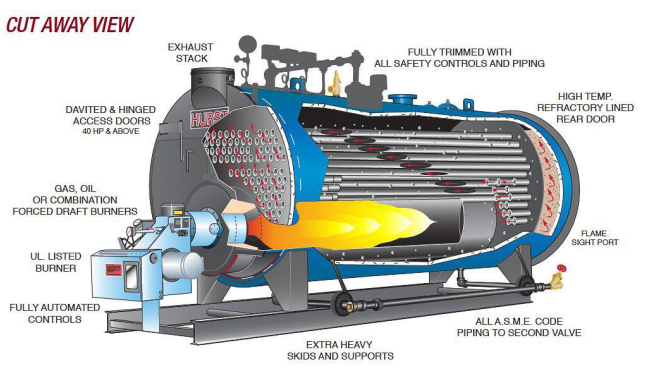
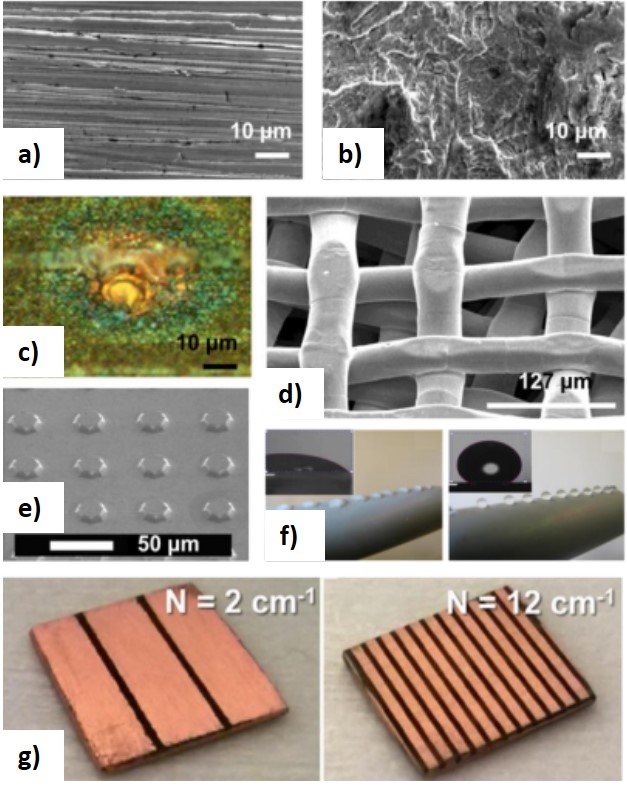
Implementation
Lab tests
Lab of Chemical and Environmental Technology of School of Chemistry in Aristotle University of Thessaloniki (Head: Prof. Thodoris Karapantsios) and Micromachining & Manufacturing Modeling Lab of School of Production Engineering & Management in Crete Technical University (Head: Prof. Aristomenis Antoniadis) collaborated in the development of different treated copper surfaces for the needs of the project, as shown in Fig. 3.
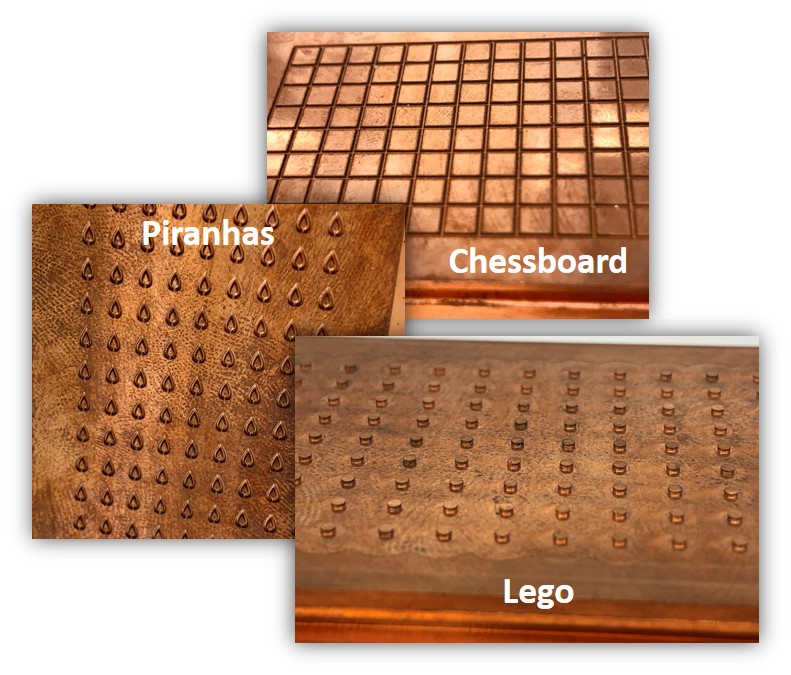
These treated surfaces were developed by means of laser engraving method with LASERTEC 40 (DMG) and characterized properly (e.g. through tracheometry and stereoscopy), Fig 4.
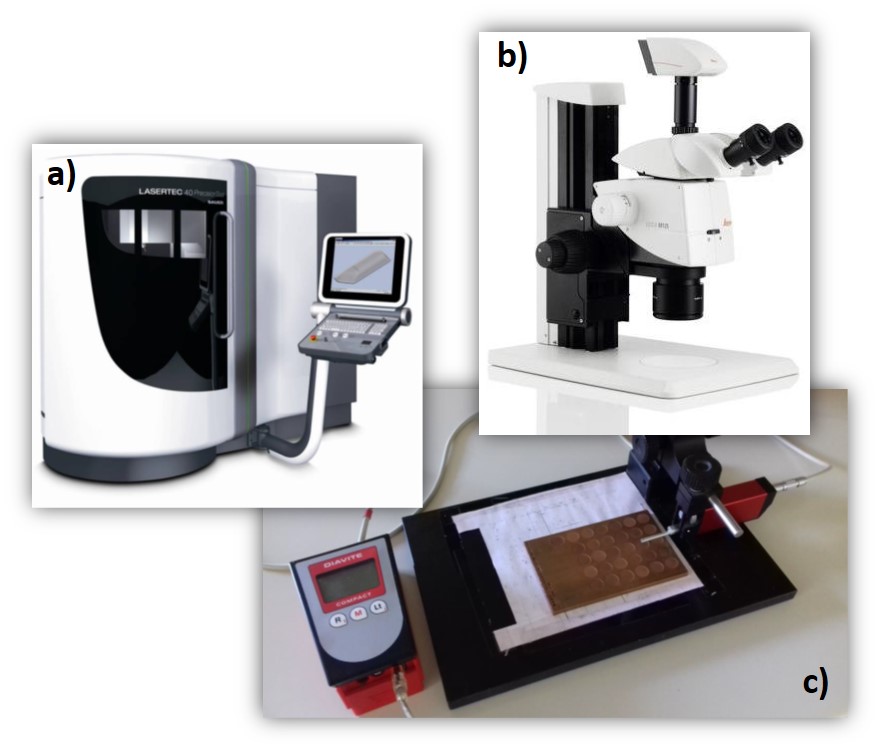
The performance of the developed treated copper surfaces was investigated in a flow boiling test loop incorporating multiple pressure/temperature sensors and a high-speed video camera, Fig. 5.
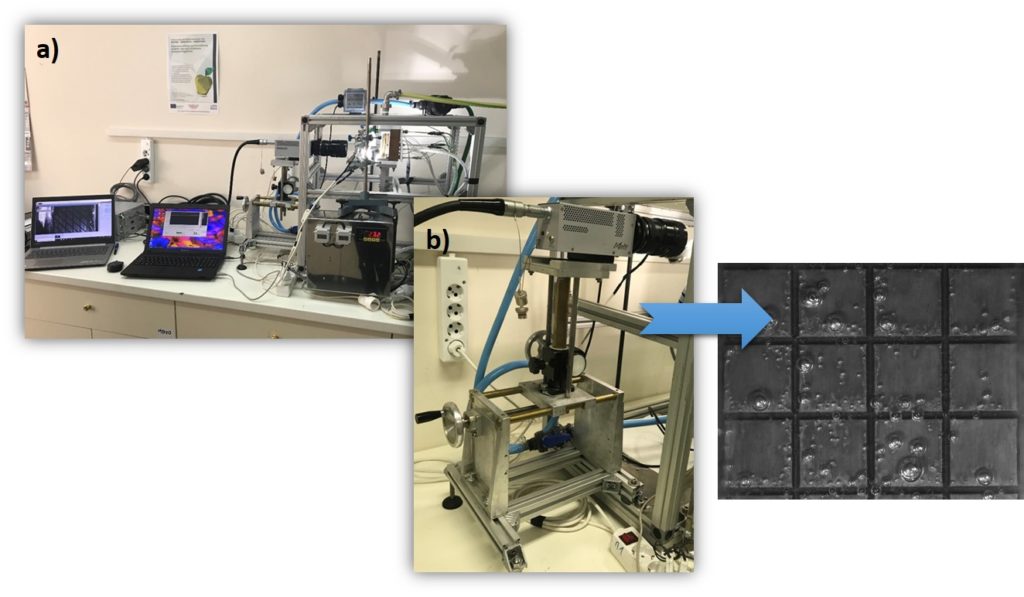
Pilot study
Hephaestus Company developed a pilot “Smart” Boiler to make use of modified tubes, Fig. 6.
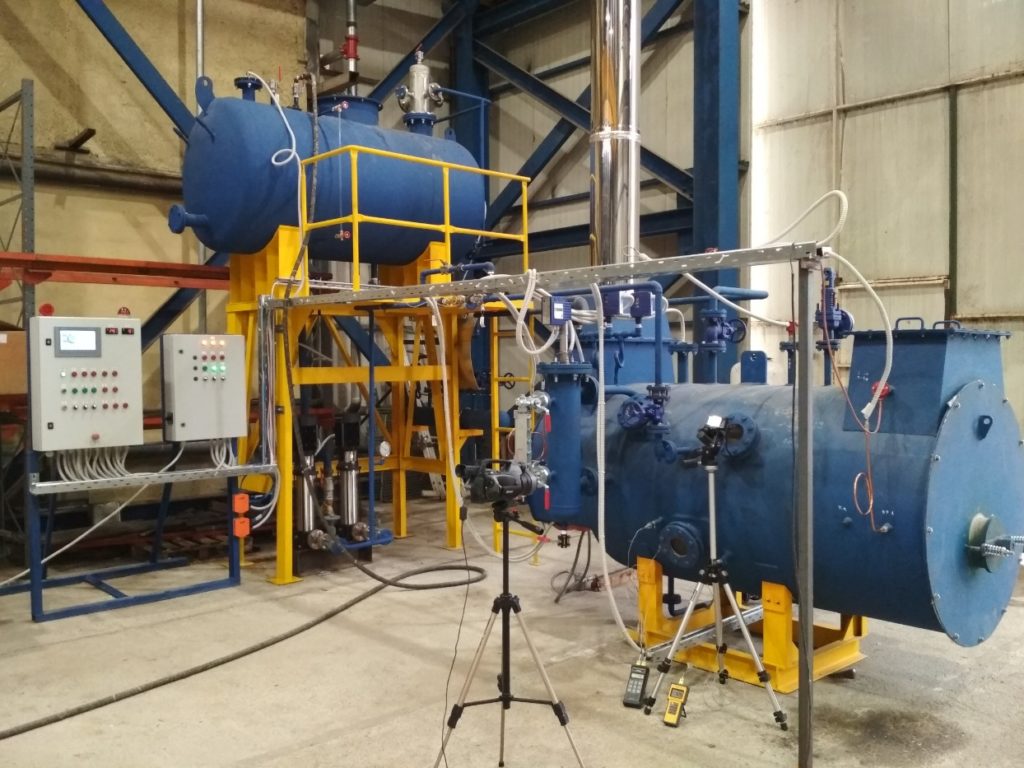
Exploiting the obtained knowledge by the lab tests, three different modified tubes were developed and tested during the evaluation of the pilot steam boiler, Fig. 7.
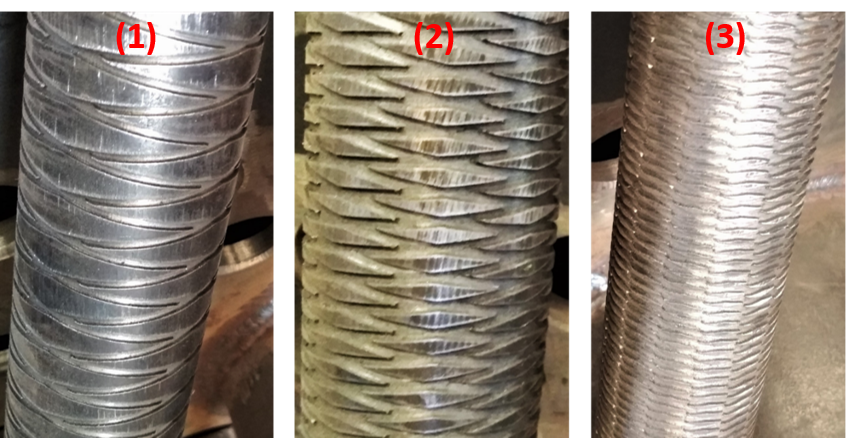
Pilot boiler accommodates several pressure and temperature sensors, as well as windows to monitor the behavior of bubbles. The evaluation of the pilot boiler performance is executed by means of pressure and temperature measurements, as well as with video-camera and IR camera recording, Fig. 8.
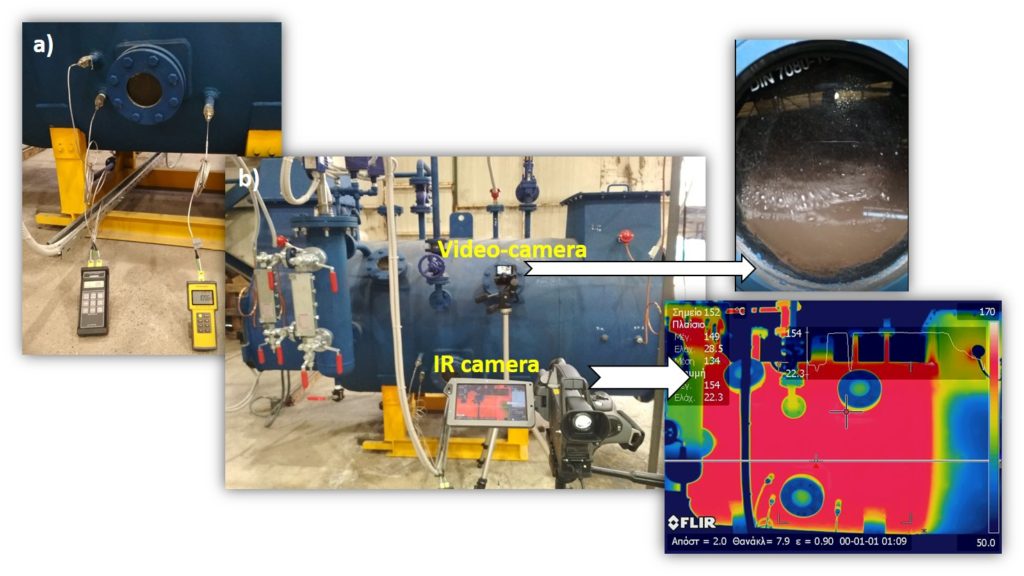
Results
Lab tests
Nucleation points are increased in a great extent when using modified surfaces. Effect of different surface patterns on boiling curve (Fig. 9) and heat transfer coefficient (Fig. 10) clearly indicates the enhancement of heat transfer comparing against smooth surface. Among different modified surfaces, Lego pattern (Fig. 3) shows the best performance.
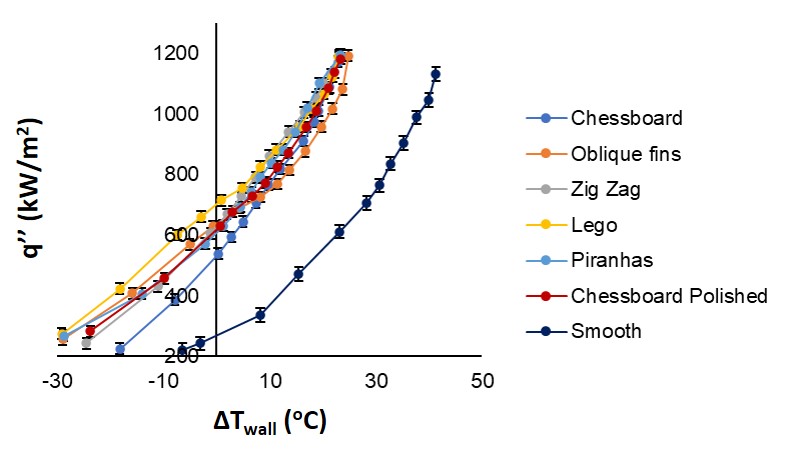
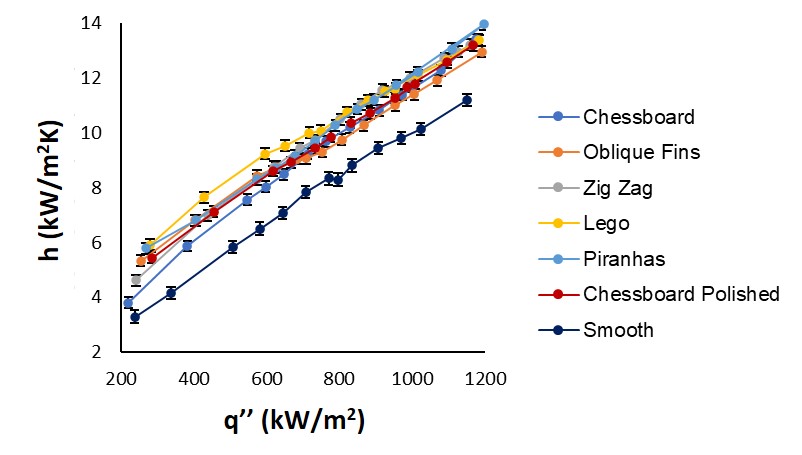
Pilot study
Table 1 presents the comparison of pilot boiler performance when applying different types of tubes. It is clearly shown that Modification (2) of tube surface (Fig. 7) indicates the best performance. It increases the efficiency of the steam boiler substantially, about 17.5%. In addition, Fig. 11 shows that the application of Modification (2) helps the boiler to reach earlier steady state conditions (about 10 min). Based on the above, it is estimated that the operating cost of the “Smart” Boiler in comparison with a conventional one decreases by 180.000 Euros for a life span of 25 ages. “Smart” Boiler, in parallel, contributes significantly to the reduction of the environmental pollution.
Table 1. Effect of different modified tube surfaces (Fig. 7) on pilot steam boiler efficiency.

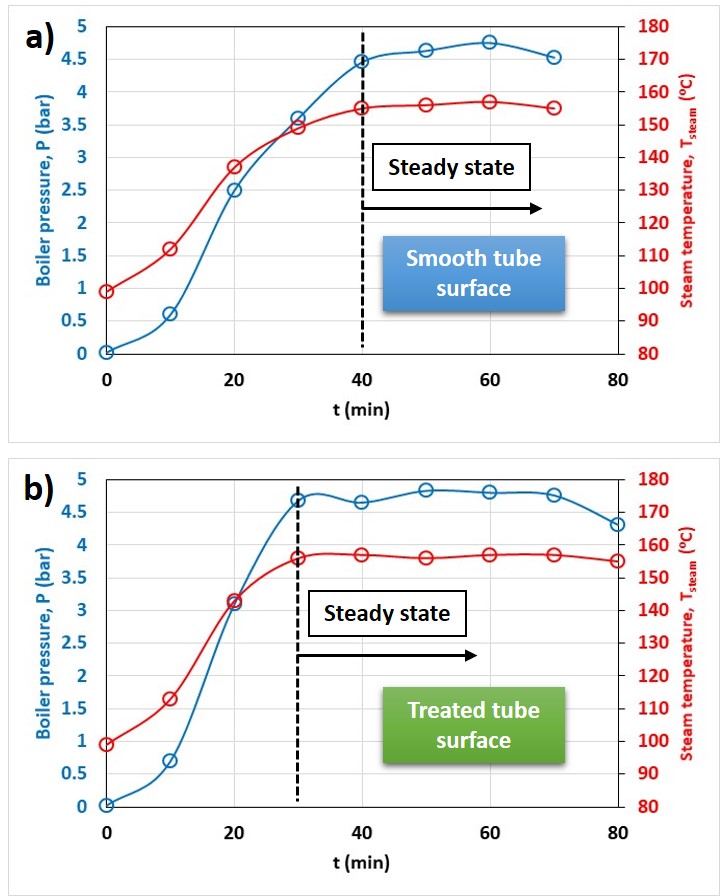
Co-financed by the European Regional Development Fund of the European Union and Greek national funds through the Operational Program Competitiveness, Entrepreneurship and Innovation, under the call RESEARCH – CREATE – INNOVATE (project code:Τ1EDK-01980)
